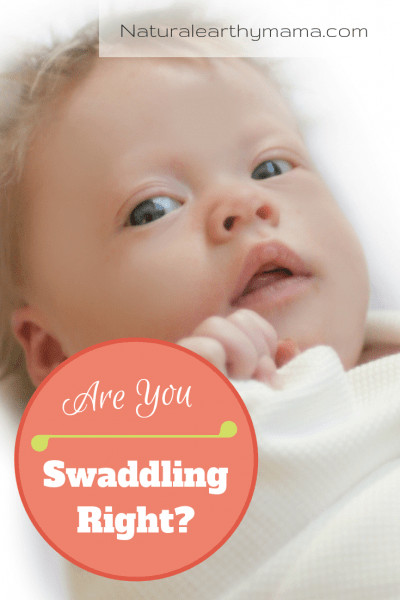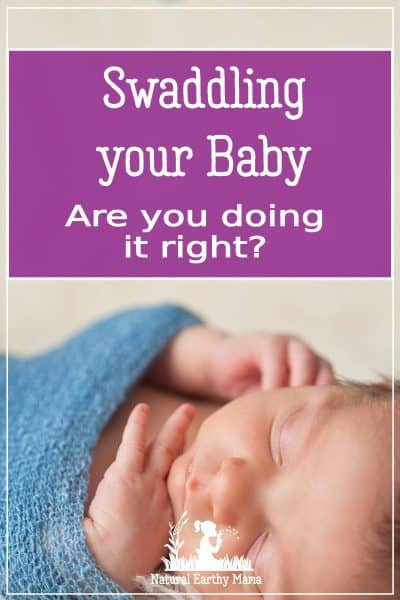 When the world met baby Prince George there began a spark of controversy about the safety of swaddling in the UK papers. There were some that suggested swaddling can cause SIDS (Sudden Infant Death Syndrome) and others that said it causes hip dysplasia (clickey hips). What can you do to minimize the risks of swaddling your baby? Are they really risks at all?
When the world met baby Prince George there began a spark of controversy about the safety of swaddling in the UK papers. There were some that suggested swaddling can cause SIDS (Sudden Infant Death Syndrome) and others that said it causes hip dysplasia (clickey hips). What can you do to minimize the risks of swaddling your baby? Are they really risks at all?
How to swaddle your baby safely
There are some steps that you need to take to ensure that your baby is swaddles safely and correctly.
Please read: This information is provided for educational purposes only and is not intended to treat, diagnose or prevent any disease. We encourage you to make your own health care decisions in partnership with a qualified health care professional.
This post contains affiliate links, this means at no extra cost to you, we make a commission from sales. Please read
our Disclosure Statement
Choose your swaddle blankets wisely
Overheating is known to contribute to Sudden Infant Death Syndrome (SIDS), babies have very poor temperature control and rely on us to monitor them closely.
According to the World Health Organization a room to sleep in should be between 65-68F/18-20 Celsius. If you need a heater in the baby’s room to keep it at this temperature, choose a safe one with a thermostat and one that will not cause a fire if knocked down.
I know it sounds simple, but you would be amazed what silly things we do in a sleep deprived state. If baby’s room is heated by heat pump/air conditioning, either directly or indirectly, please have it set on 65-68F/18-20C and leave it on this, the room will warm up, albeit slowly, there has been at least one tragic incident where a baby died from being left sleeping in a room with a heater set to 85F/30C.
In a warm room you will find a baby probably doesn’t really need much in way of blankets if they are swaddled and wearing clothing as well (probably you won’t need much if you are sleeping in the same room either).
For baby bedding, clothing and swaddles choose natural, breathable fibers – cotton, bamboo, wool and merino are great choices. Merino and bamboo in particular are amazing at absorbing moisture and wicking it away from the baby while maintaining a good temperature. Natural fibers will be warm in the cooler temperatures but stay cool if baby gets hot.
RELATED POST: Choosing the right swaddle
What fabrics you should avoid in baby swaddles
Synthetic materials like polar fleece make terrible swaddles, they do not breathe and baby is at real risk of overheating.
Yes they are cheap, yes they are everywhere, just please don’t use them for swaddles! Keep them for lying on on the lounge floor and as knee blankets in the pushchair.
If baby is swaddled please do not put them in under your bed blankets as well, keep them on top of the blankets and keep duvets well away from their face.
In their own bed a swaddled baby often needs nothing else, or just a light additional blanket may be all that is required. Ensure any blankets are tucked in well at the bottom of the bed and that baby can’t slip under them, or flick anything up on to their face.
It is a good idea to check baby’s temperature while they sleep – pop two fingers down the back of baby’s neck and check for warmth, if it is hot and clammy remove some blankets or clothing, if it is cool take measures to warm baby up.
Baby hands, feet and noses are poor temperature gauges. For peace of mind I always used to do a sneaky check of their neck as I was heading to bed, and adjust blankets are required.
RELATED POST: Encouragement for the mama whose baby won’t sleep
Always Sleep a Swaddled Baby on their Back
A swaddled baby cannot move themselves well enough to keep their airways clear if they are placed on their tummy.
Although a swaddled baby will find it very difficult to roll from their back to their stomach, but it is possible. Because of this it is suggested that once a baby can roll, you should leave one or both arms out of the swaddle just in case they do roll then they can lift their heads.
In my experience a baby with its arms out are actually more likely to roll, but nothing is fool proof, so go with what you think is best for your situation.
Many parents worry about baby choking if they are lying on their back rather than on their side or tummy. It is reassuring to know that when a baby (or adult for that matter) is lying on their back, their windpipe actually sits above the esophagus (food pipe).
This means that if baby vomits it will be more likely to go straight back down into their stomach and avoid the windpipe if they are on their backs. Babies also have very acute sensors on their larynx (back of throat), as soon as anything is detected on these sensors the baby epiglottis (flappy valve thing) closes the route to the lungs, leaving the dribble/spew/other moisture to flow back to the belly where it belongs.
RELATED POST: How to co-sleep safely
Careful wrapping/swaddling technique
Babies hips are soft, and still forming at birth and beyond. To ensure they form properly the muscles of the pelvis naturally flex a baby’s legs and rotate the knees outwards somewhat. This ensures the ball of the hip joint stay firmly in the socket of the pelvis as it continues to form.
Pulling baby’s legs down straight and keeping them there, especially for long periods, can cause them to slip out of the socket and form poorly. It is crucial that when you wrap or swaddle a baby that you allow enough room in the swaddle for them to both straighten their legs in a stretch and have it loose enough that their legs can sit naturally in a bent and relaxed outward direction.
In practicality it means that all the tucking in and wrapping firmly needs to be above the hips. Swaddling is most effective when it stops baby’s arms from flicking when they startle and gives a firm pressure on their belly – both of which can be done while allowing baby to have a natural hip position.
Can swaddling be dangerous?
When it is done poorly, with inappropriate blankets; in a hot and stuffy bedroom; with loose bedding or swaddles near a baby’s face or when a swaddle is overly restrictive on leg movement; the answer is yes, it can be dangerous.
However when it is done properly, swaddling is truly a wonderful skill for parents to have in their tool box and despite what some may say, I believe it to have saved my sleep many many times.
How to Master Swaddling – How to swaddle a baby so they don’t escape
Swaddling is is simply wrapping a baby securely. This is the cornerstone to settling a newborn. Get a large, good quality stretchy wrap, that is about 50x50inches/120x120cm. A good quality wrap will last several babies, and it is useful to have more than one. Merino or muslin swaddles are the best options.
There are many different ways to swaddle, below are two different techniques, try them and see which works best for you.
Swaddling is a great technique to calm a fussy baby, and makes settling to sleep much easier. Some parents report that their babies don’t like to be swaddled but often in this case the baby is being swaddled once it is already overtired.
RELATED POST: Settling a newborn
New parents will need to practice their technique until they are efficient, quick and firm.
Many babies enjoy being swaddled well into the second half of their first year, some continue to sleep better swaddled over one year of age.
It is important that baby’s face is kept clear at all times, and that a swaddled baby always sleeps on their back!
Dana’s Favorite Swaddling Technique:
This wrapping style is a hybrid of several, it results in a nice firm swaddle that allows baby to sleep in a natural ‘flexed’ position, with their hands under their chin.
The up side to a swaddle like this is that if you need a nappy change in the night, you can leave the top half wrapped and just unwrap the bottom half. Also babies love to have their hands near their faces. This technique allows this without their hands escaping and scratching their faces or allowing them to startle.

Step One: Lay a large square swaddle out on a firm flat surface. Fold down 6-7 inches / 15-18cm (about 5 inches) from the top and place baby on top of the swaddle off center – closer to the right hand side. Make sure the folded top edge is in line with baby’s shoulders/neck.
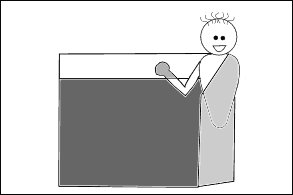
Step Two: Tuck baby’s Left arm (your right) up under the folded down edge of the fabric.
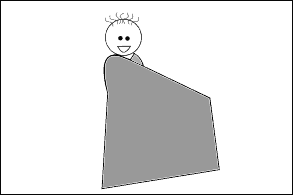
Step Three: Using both hands help baby put their wrapped arm across their chest with elbow still bent, and tuck the rest of the fabric, very firmly and diagonally downwards under their back and bottom.
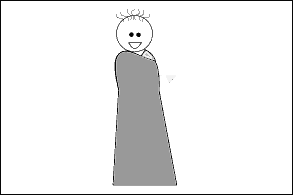
Step Four: Repeat steps one and two with the other side of the swaddle. There should now be a nice firm ‘V’ neck.

Step Five: At the feet end of the swaddle, pull the edges out to make a wide based triangle shape.
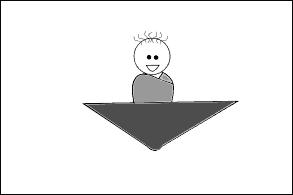
Step Six: Ensuring baby can still straighten their legs, fold up the triangle over their body.
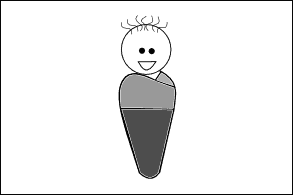
Step Seven: Wrap one side and then the other around the lower half of baby, tucking any tails in. This should be done in such a manner that baby’s legs/thighs and hips are left loose and allowed to naturally bend and rotate outwards in a relaxed position.
DONE!
Traditional Swaddling Technique:
This is the more traditional swaddling method that many websites demonstrate and recommend.

Step one: Fold the swaddle’s top corner 2/3 of the way down and lay on a flat surface. Lay baby on top.

Step two: Hold baby’s left arm down against their body and use the left flap to wrap very firmly around baby’s body and tuck the rest flat underneath baby’s body.

Step three: Take the point down by baby’s feet and tuck it over behind baby’s right shoulder, leaving enough room to allow for straight legs.

Step four: Hold baby’s right arm straight and take a segment of the right flap pull it across their body to make a ‘v’ neck. Hold this in place with the thumb of your left hand during step five.

Step five: While holding the ‘v’ in place use your whole right hand to pull the rest of the right flap firm and flat across the body and right behind baby. This should be done in such a manner that baby’s legs/thighs and hips are left loose and allowed to naturally bend and rotate outwards in a relaxed position.

Step six: Bring the flap behind baby, right around to the front on the right side again and tuck it into the right side of the ‘v’ neck. This is the key to a secure wrap.
